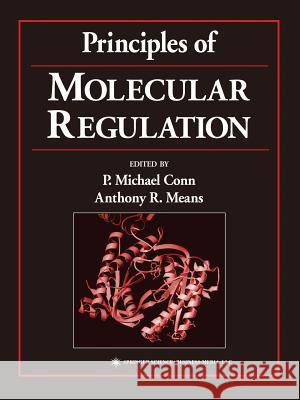Principles of Molecular Regulation » książka
Principles of Molecular Regulation
ISBN-13: 9781617371042 / Angielski / Miękka / 2011 / 474 str.
THE STATE oF HoRMONE AcTioN levels were induced in concert with ligand occupa- tion of certain membrane receptors and this second AND MoLECULAR REGULATION messenger (cAMP) was postulated to initiate intra- cellular phosphorylation of unknown targets. At Molecular Endocrinology and Regulation is a this point, the field ofPeptide Hormone Action also burgeoning field, having experienced a remarkable came into being. period of growth since the late 1960s. At that time, These fields developed together for much ofthe there was no field of Hormone Action. The prevail- next decade. Hormone Action Conferences invari- ing view of how hormones worked ranged from ably contained talks on both types of receptors and effects on membrane transport of nutrients and progress was rapid and in concert with the explo- precursors for RNA and protein synthesis, to effects sion molecular biology. In the steroid field, on the translation of mRN A at the level of ribo- progress was more rapid initially, but by the mid somes. Therewas, however, asmallcadreofvoices 1980s, the peptide field attained equal mechanistic that predicted a possible nuclear action on mRN A status and the source of specialized conferences of synthesis. The first such paper was presented at the national endocrine meetings in 1967 and dealt with its own. Steroid hormone action investigators concen- hormonal stimulation of oviductal protein synthe- tratedonfirst understanding the "pathway" of action sis. It was about this time that a small group of for their hormones.











